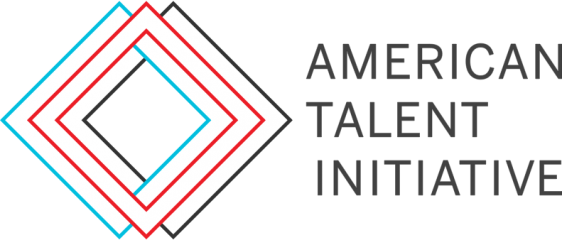Knox College President Andy McGadney: Introducing Price Transparency through a Pilot Promise Program
August 29, 2022
Reading Time: 4 minutes

Early in his first year, Knox College President Andy McGadney launched the Prairie Promise, an initiative to meet all in-state residents' full, demonstrated financial need. For students who may otherwise opt for a regional public institution, this initiative offers the chance to experience the residential, liberal arts education that Knox offers at a net price competitive with any college or university in the region. As students make their admissions decisions, they receive financial aid packages that are clear, comprehensive, and take into account their personal, professional, and family circumstances. ATI interviewed President McGadney about this initiative for its Presidential Perspective series, editing it for length and clarity.
###
Tenure in the Presidency: 1 year Accelerating Opportunity Goal: Maintain Pell Share
Q: Tell us about how the Prairie Promise came to be. How did you drive support for it in your first year?
When I started my presidency and reviewed our admissions data, I noticed the number of students from Illinois (our home state) applying to Knox slowly eroded over time. We wanted to be sure we were doing additional outreach and offering programs to get our Illinois students - students from our home state - considering and applying to Knox in greater numbers again. For example, the community-based organizations (CBOs) and counselors that support lower-income students in the Chicago region were unaware of Knox’s generous financial aid offerings, which had knocked Knox off their radar. In addition, students accepted to Knox were opting for other schools in the state for a difference in aid of $500 or $1,000.
College admissions are incredibly competitive for us, as is. We needed to compete more effectively with the public universities in our state and other private colleges across the country with our aid offerings to Illinois students. And we need to grow enrollment now to address the impending demographic cliff. The Prairie Promise was one of our answers, a key part of our drive to make a Knox College education accessible and attainable for all of our prospective students.
As we launched the concept, I met with ten different CBOs on campus, signaling my commitment to these partnerships. As a part of these conversations, I elevated our comprehensive approach to student success and reiterated our effort to ensure Knox was affordable and attainable for all prospective students and their families.
In addition to engaging CBOs to help renew interest in and applications from in-state students, we coordinated fly-ins from education “influencers.” These college counselors build trusting, impactful relationships with prospective students and parents–and often shape their decisions on the colleges they attend. We found that the Prairie Promise, and communication with these influencers about the program, renewed interest in and applications to Knox from in-state students we had been losing to competitors.
Q: How will the Prairie Promise impact low-income students? Middle-income students?
Through the Prairie Promise, we can provide students from Pell-eligible and middle-income backgrounds in Illinois with financial aid packages that meet their full, demonstrated need. Whether they have an expected family contribution of $2,000 or $14,000, we help bridge the gap and ensure their cost of attendance is comparable to that of an in-state, public university. In return, students get to experience the transformative power of the residential liberal arts experience we provide at a net price they can afford.
As an example of impact, the Prairie Promise provided 543 admitted students this past admission cycle with financial aid that met 100% of their demonstrated financial need. 27% of those students decided to enroll at Knox this fall, compared to 19% of similar students a year ago—or about 43 additional students. This tells us that meeting full demonstrated need through the Prairie Promise can provide students in both low- and middle-income families access to a Knox education.
Q: As a small liberal arts college with a relatively modest endowment, how does your institution sustain a financially ambitious initiative like the Prairie Promise?
We work closely with our Board of Trustees, which includes some very high-level corporate chief financial officers (CFOs), to plan financially ambitious initiatives responsibly and for the long term. When I arrived at Knox, I was tasked with solving its structural deficits. We issued a five-year projection and landed on a self-funded model to balance the budget, increasing our draw from the endowment, fundraising efforts, and occupancy on campus. As a part of this projection, we also needed to increase enrollment to offset the demographic cliff, growing from 1,100 to 1,500 students over four years. The Prairie Promise is an investment in Knox’s future.
We also know that if we can get these students onto Knox’s campus, we have the infrastructure in place to ensure they persist and succeed. We are making small-scale investments in mental health through telehealth, and additional counselors, which we know can lead to increases in retention. Ensuring more students stay on campus is a key strategy for realizing a balanced budget and our mission.
Q: What do you want other presidents-- especially from peer institutions-- to know about launching similar programs as you prepare for Year 2 of the Prairie Promise?
Maintain a focus on innovation at your institution. I’ve learned that offering something new to your students every year will help generate interest and visibility. Think then about differentiating your offering from other institutions in some way. In our case, we recognized many institutions offer their own version of the Prairie Promise. When we designed the initiative, we asked ourselves: what is the distinct X factor? How does it relate to your college’s values? We continue to empower counselors as ambassadors and tap additional influencers to share information about the Prairie Promise with prospective students and families earlier in the admissions process.
Finally, take the risk and understand that this is a long-term investment, not a short-term gain. These programs can lay the groundwork for a more equitable campus over time. We launched Prairie Promise midway into the admissions cycle last year and still experienced a bump from 10 to 12 percent in the share of in-state students attending Knox. Given this proof of concept, we now feel like we can accelerate that progress by promoting the Prairie Promise across the state earlier in the application cycle. However, we still need to learn more about its return on investment and what specifically resonates with students. Even so, I am positive that the Prairie Promise will pay off.



